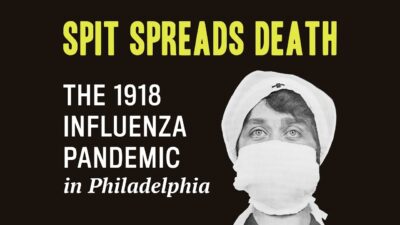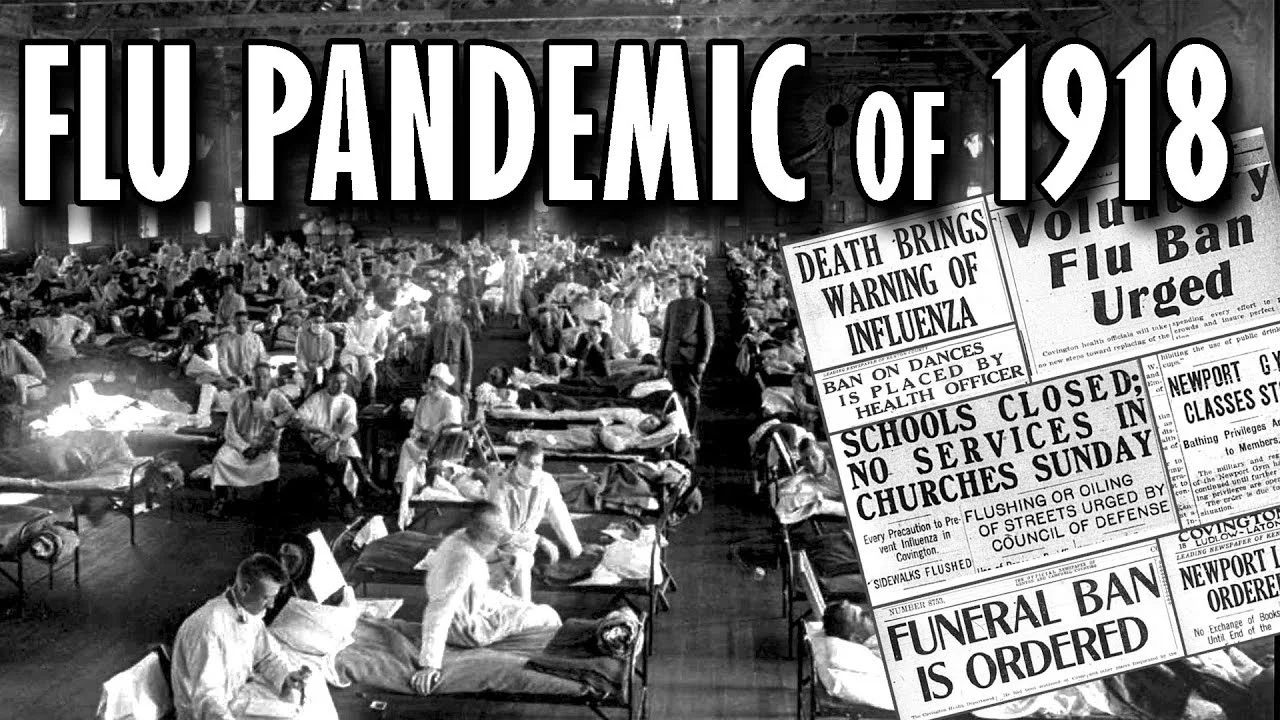The 1918 Influenza Pandemic, often referred to as the “Spanish Flu,” stands as one of the deadliest disease outbreaks in modern history. Spanning from
The 1918 Influenza Pandemic, often referred to as the “Spanish Flu,” stands as one of the deadliest disease outbreaks in modern history. Spanning from early 1918 to 1920, this pandemic caused unprecedented global devastation, infecting an estimated one-third of the world’s population and claiming the lives of at least 50 million people worldwide. The scale and severity of the 1918 flu reshaped public health policies, medical research, and the global understanding of viral pandemics. This article explores the origins, progression, impact, and lasting lessons of the 1918 Influenza Pandemic.
Origins of the 1918 Influenza Pandemic
The precise origin of the 1918 influenza virus remains somewhat uncertain, but researchers generally agree that it was an H1N1 influenza A virus. It likely emerged in the final year of World War I, an era characterized by mass troop movements and poor living conditions, which facilitated rapid transmission.
Some historical hypotheses suggest the virus began in the United States, possibly in military camps such as Camp Funston in Kansas, before spreading to Europe with American troops heading overseas. Other theories propose origins in France or China. Regardless of its exact geographic origin, the crowded and unsanitary conditions in military camps, trenches, and war-torn regions provided an ideal environment for the virus to spread quickly.
The name “Spanish Flu” is a misnomer. Spain was neutral during World War I and had a free press that extensively reported on the outbreak, unlike many countries involved in the war that censored news to maintain morale. Thus, Spain appeared to be especially hard hit, but the virus was already widespread globally.
The Virus and Its Unique Characteristics
The 1918 influenza virus was exceptionally virulent and had unique features distinguishing it from other influenza outbreaks. Unlike seasonal flu, which typically causes severe illness primarily in the very young, elderly, or those with weakened immune systems, the 1918 strain also caused severe disease in healthy young adults.
One possible reason for this atypical pattern is the phenomenon called a “cytokine storm,” where an overly aggressive immune response causes damage to the lungs and other tissues. This overreaction by healthy immune systems may explain the high mortality rate in people aged 20 to 40, who otherwise would have been expected to survive influenza.
The virus caused rapid onset of symptoms, including high fever, chills, fatigue, and severe respiratory distress. Many victims developed pneumonia as a secondary infection, which was often fatal given the lack of effective antibiotics at the time.
Spread and Global Impact
The 1918 influenza pandemic unfolded in three distinct waves. The first wave, starting in the spring of 1918, was relatively mild but highly contagious. The second wave, appearing in the fall of 1918, was far deadlier and responsible for the bulk of deaths. The third wave, in early 1919, caused further fatalities but with reduced severity compared to the second.
The movement of troops during World War I played a critical role in spreading the virus worldwide. Military transport ships and crowded camps acted as vectors, moving the flu rapidly across continents. Major cities such as Philadelphia, New York, London, Paris, and Mumbai experienced devastating outbreaks.
Estimates indicate that approximately 500 million people—about one-third of the global population at the time—were infected. The death toll is estimated between 50 million and 100 million worldwide, with some regions experiencing mortality rates as high as 10% of their populations.
In the United States alone, around 675,000 people died. In many Indigenous communities and isolated populations with no prior exposure to influenza, the mortality rate was extraordinarily high due to a lack of immunity and poor access to healthcare.

Social and Economic Consequences
The pandemic had wide-ranging effects beyond health. Economies across the globe suffered due to widespread illness and death, leading to labor shortages and disruption in industries like agriculture, manufacturing, and transportation. Schools, theaters, and public gatherings were frequently shut down to reduce transmission, impacting social life and education.
Healthcare systems were overwhelmed. Hospitals ran out of beds and medical supplies, while doctors and nurses were stretched thin, many succumbing themselves to the flu. The lack of effective vaccines and antiviral drugs meant that public health measures focused on isolation, quarantine, use of face masks, and hygiene.
Psychologically, the pandemic instilled a sense of fear and helplessness in populations already traumatized by the war. Public trust in governments and medical authorities was sometimes shaken, especially when misinformation spread or when measures seemed ineffective.
Medical and Scientific Advances
Although the 1918 influenza pandemic was a tragedy, it spurred significant advances in medical research and public health infrastructure. Scientists worked to isolate the virus, understand its transmission, and develop vaccines. It wasn’t until the 1930s that the influenza virus was properly isolated and identified.
The pandemic highlighted the critical importance of surveillance and reporting of infectious diseases. Many countries established or strengthened public health institutions, improved disease tracking systems, and developed plans for future outbreaks.
Additionally, the 1918 flu underscored the need for antibiotics, which were not yet available but would become essential for treating secondary bacterial infections like pneumonia in subsequent decades.
Lessons Learned and Modern Relevance
The 1918 influenza pandemic remains a crucial reference point for understanding pandemics and managing global health crises. Several key lessons continue to influence modern public health:
- Early Detection and Transparency: Timely reporting and transparency are essential to control disease spread. Suppression or censorship of information can worsen outbreaks.
- Importance of Non-Pharmaceutical Interventions: Social distancing, quarantine, mask-wearing, and hygiene are effective tools when vaccines or treatments are unavailable.
- Healthcare System Preparedness: Robust healthcare infrastructure and surge capacity are critical during pandemics to handle patient loads.
- Global Cooperation: Disease outbreaks do not respect borders. International cooperation is necessary for surveillance, research, and resource sharing.
- Vaccine Development: Rapid development and distribution of vaccines can save millions of lives in pandemics.
The COVID-19 pandemic of 2020 further demonstrated the ongoing relevance of these lessons, as the world faced challenges remarkably similar to those seen in 1918.
Conclusion
The 1918 Influenza Pandemic was a catastrophic event that reshaped the world in many ways. It exposed vulnerabilities in healthcare, public health policy, and social structures, while also accelerating scientific discovery and international cooperation. By studying and remembering the 1918 flu, humanity gains critical insights into how to better prepare for and respond to future pandemics, aiming to prevent history from repeating its darkest chapters.
Frequently Asked Questions (FAQs)
Q1: Why is the 1918 influenza called the “Spanish Flu”?
A1: The 1918 flu got the nickname “Spanish Flu” because Spain, a neutral country during World War I, reported openly on the outbreak. Many other countries involved in the war censored news about the flu to maintain morale, so Spain appeared to be especially hard hit, although the virus was widespread globally.
Q2: How many people died from the 1918 influenza pandemic?
A2: It is estimated that between 50 million and 100 million people died worldwide, with about one-third of the global population infected. This makes it one of the deadliest pandemics in history.
Q3: What made the 1918 influenza virus so deadly?
A3: The 1918 virus was unusually virulent and caused severe illness even in healthy young adults. A likely factor was a “cytokine storm,” where the immune system overreacted and caused extensive lung damage, leading to rapid deterioration and death.
Q4: How did World War I contribute to the spread of the pandemic?
A4: World War I facilitated the rapid global spread of the virus due to the movement of millions of troops, crowded military camps, transport ships, and poor sanitary conditions, all of which were ideal for virus transmission.
Q5: Were there vaccines or treatments for the 1918 influenza?
A5: No effective vaccines or antiviral treatments existed at the time. Medical care was limited to supportive treatments, and many died from secondary bacterial infections like pneumonia, for which antibiotics were not yet available.
Q6: What public health measures were used to control the pandemic?
A6: Measures included quarantine, isolation of the sick, social distancing, use of face masks, closures of public places, and promotion of hygiene practices like handwashing.
Q7: What lasting impact did the 1918 pandemic have on medicine and public health?
A7: The pandemic led to improved disease surveillance, strengthened public health institutions, and accelerated influenza research, eventually leading to the development of vaccines and better pandemic preparedness.
Q8: Can pandemics like the 1918 influenza happen again?
A8: Yes, pandemics remain a threat due to the ability of viruses to mutate and spread rapidly. However, advances in medicine, vaccines, and public health have improved the world’s ability to respond and control future pandemics.
Must Visit: spotlightlive




COMMENTS